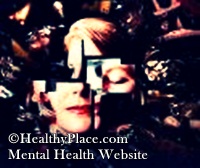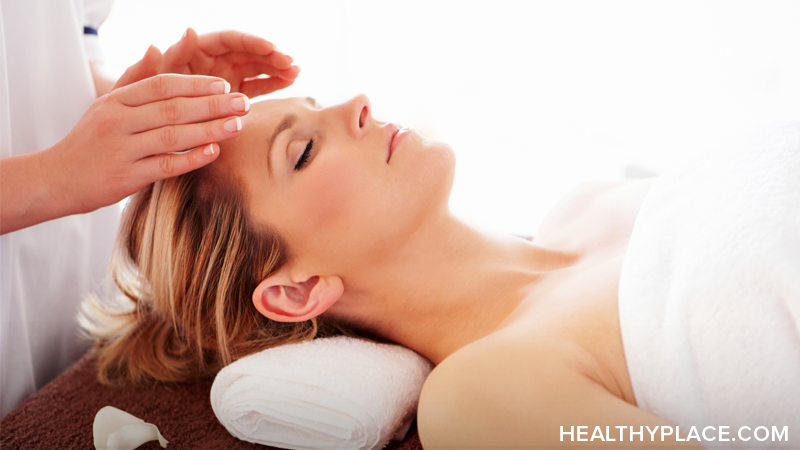Alternative Treatments for Schizophrenia

Covering a holistic approach to treating Schizophrenia. Discussion of psychotherapies, social skills and vocational training, self-help groups and family interventions.
What non-drug treatments are available for schizophrenia?
'We now have the revolutionary insight that schizophrenia - rather than causing an inevitable downhill deterioration - actually entails a slow uphill progression of recovery" (Arnold Kruger, Schizophrenia: Recovery and Hope, 2001).
There is no instant cure for schizophrenia but people can and do recover. The experience of schizophrenia is unique to each person and as a result, each person's experience of recovery is unique - what might work well for one person may not work so well for another. It's vital, therefore to learn about all the different treatment options available to you so that you can play an active role in your recovery. For an excellent depiction of 'roadways to recovery', click here.
A holistic approach
The holistic approach as it is applied to the treatment of schizophrenia, means "assessing how schizophrenia is affecting all aspects of an individual's being. The emotional, psychological, social and physical aspects should all be considered - the focus is not exclusively on the illness. This approach recognises that a person who has schizophrenia may be particularly prone to a range of health problems as a result of their illness and while treating these may not affect the symptoms of schizophrenia, it will improve overall quality of life"1. Preventative measures (taking sensible precautions), are very much a part of this approach and include keeping an eye out for any general health problems, monitoring dietary habits, caffeine and nicotine intake, sleep patterns, exercise and leisure activities.
Additional pathways to recovery
Although medication is almost always necessary in the treatment of schizophrenia, it is not usually enough by itself. As mentioned earlier, it is important to seek out additional resources, such as 'talking therapies', social and employment rehabilitation services, and living arrangements that may be helpful at various stages of recovery. It is also extremely important for individuals, family members and health providers to make decisions together about treatment plans and goals to work toward. Below are some forms of activities that may be useful in the recovery process.
Psychosocial interventions
Education
Education for the individual and the family about schizophrenia is essential. Providing education and information enables the family as well as the person with schizophrenia to take an active role in the recovery and rehabilitation process, and to do so from an empowered position.
 Social and living skills training
Social and living skills training
Social and living skills training is an effective means of enabling individuals with schizophrenia to re-learn a variety of skills necessary for living independently. Social and living skills training can be used with individuals and with groups and provides opportunities for people to acquire skills they have not been able to develop due to particular life circumstances, re-learn skills which were lost or reduced due to the disabling effects of schizophrenia or particular life circumstances and enhance existing skills to enable more effective functioning.
Vocational training and rehabilitation
Work has the potential to be a 'normalising' experience and to provide benefits such as enhanced personal satisfaction, increased self-esteem, additional income, financial independence, social interaction and recreational and companionship opportunities. Most importantly, it is frequently identified as a goal of people with schizophrenia. Any person with schizophrenia who expresses an interest in gaining employment, or who may benefit from employment, should receive vocational services.
Talking therapies
There are several different 'talking therapies' to choose from. They range in their approaches, from aiming to ease distress and improve coping skills though to seeking to help people understand their own thoughts, feelings and patterns of behaviour. Some of these talking therapies are listed below.
Counselling: Counsellors listen without judgement and help individuals to explore issues which are important in the recovery process. Counsellors do not give advice but should act as a guide for individuals in working things out for themselves.
Psychotherapy: Psychotherapy is a learning process that is accomplished largely by the exchange of verbal communication. Psychotherapy has many different orientations but can generally be categorised into three broad groups: psychodynamic (which is based on the teachings of Freud), behavioural (which aims to modify behaviour) and humanistic (which aims to increase self-understanding). While behaviour modification can be very helpful for some people, research into the use of psychodynamic therapy for people with schizophrenia has consistently failed to support its effectiveness. Furthermore, there is some evidence to suggest that psychodynamic therapy is harmful and therefore it is not recommended.
Cognitive Therapy: Cognitive therapy is also known as cognitive behavioural therapy (CBT). Cognitive behavioural therapy is concerned with the influence of beliefs, thoughts and self-statements on behaviour. CBT for the symptoms of schizophrenia aims to heighten awareness of the inconsistency of delusions and to develop practical coping mechanisms for persistent symptoms.
Self-Help Groups: Some people find it helpful to talk about their experiences with others who can empathise because they have been through similar situations themselves. People can get practical help by working through their problems with others and develop strong support networks among peers. Self-help groups are run by Schizophrenia Ireland and cover most areas of the Republic of Ireland.
Alternative Therapies for Schizophrenia
Alternative therapies have been used by people for thousands of years and some people find them very helpful in the recovery process. Some of these therapies include: meditation (a special form of relaxation), aromatherapy (the use of essential oils), reflexology (the manipulation of pressure points on the feet), acupuncture (ancient Chinese remedy using needles and herbs), massage, t'ai chi (meditation in movement), and yoga (exercise which concentrates on breathing and stretching). You might also like to try some creative therapies, which can include art, drama, music, writing and performing. The trick is to find out which therapies you enjoy most and which you find to be most helpful, and this can only be done through trial and error (although you should have a lot of fun finding out!). It is very important to remember, however, that these therapies should be used in addition to your medication and psychosocial therapies (listed above), not instead of them.
Family Interventions
The family is considered to be an essential part of the assessment, treatment and recovery process for people with schizophrenia. For families to be effective in this role, without becoming overburdened or exhausted, they need information, support, sufficient time for professional consultation, and respite mental health services. See the fact sheet for relatives in this pack for more information on services specifically for families.
back to: Complimentary and Alternative Medicine
References
1. NSW Dept. of Health (2001) The Schizophrenias: Guidelines for a Holistic Approach to Clinical Practice, Sydney, 66
2. McEvoy, J.P., Scheifler, P.L. and Frances, A. (Eds) (1999) The Expert Consensus Treatment Guidelines for Schizophrenia: A Guide for Patients and Families, in Expert Consensus Guideline Series: Treatment of Schizophrenia 1999, Journal of Clinical Psychiatry, 60 (suppl.11), 4-80
3 & 4. NSW Dept. of Health, op.cit., 46
5. McEvoy et al., op.cit., 4
6. Ibid.
7. & 8. NSW Dept. of Health, op.cit., 46
Source: Parts of this article are replicated with the permission of Schizophrenia Ireland.
APA Reference
Staff, H.
(2008, October 28). Alternative Treatments for Schizophrenia, HealthyPlace. Retrieved
on 2025, December 24 from https://www.healthyplace.com/alternative-mental-health/schizophrenia/alternative-treatments-for-schizophrenia
 Parents concerned about their child's behavior, especially suicidal talk and gestures, should have the child immediately evaluated by a professional familiar with the symptoms and treatment of early-onset bipolar disorder.
Parents concerned about their child's behavior, especially suicidal talk and gestures, should have the child immediately evaluated by a professional familiar with the symptoms and treatment of early-onset bipolar disorder.
